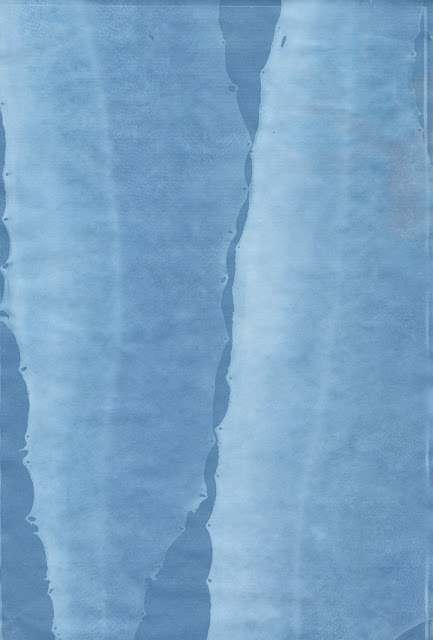Ich bin immer auf der Suche nach interessantem zur Buchbinderei. In letzter Zeit sind gleich 3 Päckchen zu Werner G. Kiessig, Meister der Einbandkunst (MDE) in der DDR, hier eingetroffen.
I was recently able to acquire some ephemera and sample books relating to the bookbinder Werner Kiessig who lived and worked in Berlin, Ost, but was also a member of the Meister der Einbandkunst (MDE), then a largely West German group that changed its name to "Meister der Einbandkunst – Internationale Vereinigung e.V." so that Kiessig could become a member.
 |
Backing board for a calendar advertising Werner Kiessig's bindery, 1972
The calendar board and exhibition catalog artwork is by Werner Klemke who was very well known internationally
More examples of Klemke's illustrations can be found here or here. |
Kiessig wurde 1924 in eine buchbinderische Familie geboren - Der Grossvater gründete 1893 in Berlin eine Globusfabrik und Buchbinderei die sein Vater 1918 als industrielle Buchbinder übernahm. Kiessig machte seine Lehre bei Kurt Grünewald und studierte unter anderem mit Bruno Scheer an der Graphischen Fachschule in Berlin. Grünewald und Scheer waren beide Mitglieder der MDE. Er blieb in der DDR, machte 1948 seinen Meister im Buchbinderhandwerk, verpachtete die familiäre industrielle Buchbinderei und widmete sich der Einzel- und Sonderfertigung. 1956 wurder er als Kunstschaffender im Handwerk" anerkannt und später Mitglied im Verband Bildender Künstler wodurch er sich Vorteile verschafte und er die Erlaubnis bekam Mitglied der MDE zu werden auch weil MDE "Internationale" dem Vereinsnamen beifügten. Seine Arbeiten wurden international ausgestellt und er war aktive mit Veröffentlichungen und Vorträgen. Er starb 2014 in Berlin. Etwas zu Kiessig gibt es auch in dem Blog der Pirckheimer Gesellschaft in der Kiessig auch Mitglied war.
Andere Aufsätze zu Werner Kiessig:
- Werner Kießig. MDE-Rundbrief . 2013, Nr. 2: 10-11
- Porträt, MDE-Ehrenmitglieder, Werner Kießig. MDE-Rundbrief . [2015], Nr. ?: 12-16
- Der Meister der Einbandkunst Werner G. Kießig. Enthalten in Marginalien Bd. 225, 2017, Nr. 2: 93-95
Kiessig was born into a Berlin trade/industrial bookbinding family, served his apprenticeship in with Kurt Grünewald and studied with Bruno Scheer, both members of the MDE. After the war, he remained in what became the DDR. He earned his Meister in 1948. With his interests clearly in the hand/fine bookbinding side of the trade he leased the industrial side of the firm to focus on the other. 1956 he was recognized as a "Kunstschaffender im Handwerk," a "trade-based" artist, as well as being a member of the "Verband Bildener Künstler" and other cultural organizations. Because of these, he had greater freedoms to pursue his creative work and become active in international organizations such as MDE. He also joined Designer Bookbinders in 1981. He exhibited and presented widely, mostly in Eastern Europe. He died in 2014.
 |
| Alle drei Musterbücher | All three sample books |
"Schriften, Linien, Ornamente" sind Musterbücher von einigen derselbigen, die man Kunden vorlegte. Hier Beispiele. Insgesamt, konnte ich 3 solche Bände erwerben, alle so aus dem Zeitrum zwischen den späten 50er bis in 70er.
The sample books "Schriften, Linien, Ornamente" were used to give clients an overview of the type faces and stamps that could have been used on their books.
"Handeinbände," eine Ausstellung der Deutschen Staatsbibliothek von 1984 zeigt viele seiner einfallsreichen Einbände mit einer Vielfalt an Materialien. Bei vielen kann mann sehen wie er auch mit einfachen Materialien sehr ansprechende Einbände schuff.
Handeinbände was a 1984 exhibit of his bindings at the Deutsche Staatsbibliothek. He was best known for his "fine bindings," many of which were shown in the exhibit. In some of the examples one can see how he used simple and more available materials to create handsome bindings.
 |
Auch sehr schön ist die Werner Klemke Zeichnungen auf dem Deckblatt des Katalogs.
Werner Klemke also contributed the cover design of the catalog. |
























































